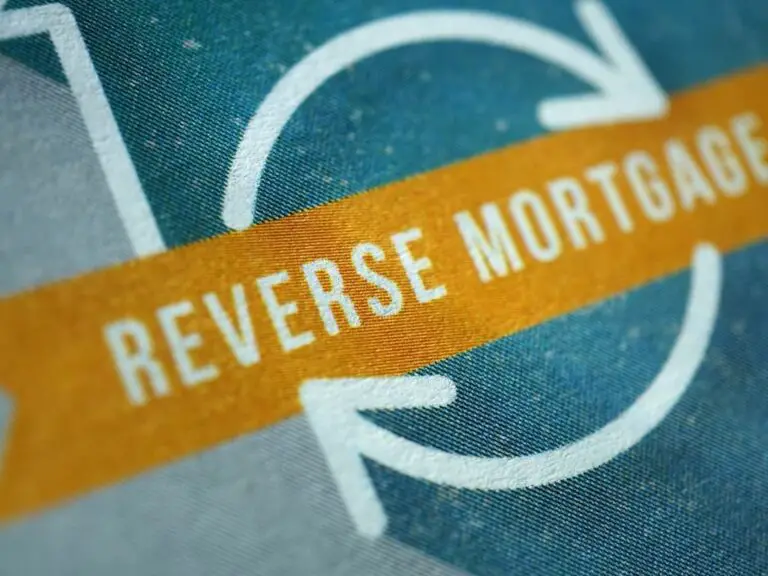How Much Can You Contribute to a Gold IRA?
As the elderly approach their retirement years, diversifying investment portfolios becomes essential to secure financial stability in the golden years. One such option gaining popularity is investing in a Gold IRA.
Investors have long turned to gold as a safe-haven asset due to its historical stability during economic downturns. In recent times, seniors have recognized the potential of Gold IRAs as a means to bolster retirement funds. A Gold IRA offers the advantage of combining the benefits of a traditional individual retirement account (IRA) with the security of investing in physical gold.
How much can you contribute to a Gold IRA?
The annual contribution limit to a Gold IRA, as set by the IRS, is $6,500 for 2023. However, if you’re 50 years old or above, this limit increases to $7,500. These limits apply across all types of IRAs an individual might possess, including traditional, Roth, and gold IRAs.
This article delves into the concept of Gold IRAs and explores contribution limits, guiding seniors toward informed decisions for a prosperous retirement.

Why IRA Contribution Limits Exist
The IRS sets contribution limits to regulate the amount of money flowing into retirement accounts, ensuring that these accounts are used for their intended purpose: providing financial security during retirement. By imposing limits, the IRS also seeks to prevent individuals from exploiting tax advantages excessively.
In 2023, the yearly contribution cap stands at $6,500. However, if you’re 50 years old or above, this limit increases to $7,500. The contribution ceiling was $6,000 (or $7,000 if aged 50 or older) in the years 2019 through 2022. From 2015 to 2018, the annual contribution maximum was $5,500 (or $6,500 if you were 50 or older), per the IRS.
It’s important to note that your Roth IRA contributions could be constrained by your filing status and income. These limits are all-encompassing, covering various types of IRAs, such as traditional, Roth, and gold IRAs, that an individual might possess.
Some of the factors that impact contributions include:
- Type of IRA: Different IRA types have distinct contribution limits. Understanding these variations is vital for effective retirement planning.
- Age: As mentioned earlier, individuals aged 50 and above can make catch-up contributions, recognizing the need to accelerate retirement savings as retirement draws nearer.
- Income Level: In some cases, income levels can influence the contribution limits for certain types of IRAs, including Roth IRAs.
However, seniors looking to optimize their Gold IRA contributions should consider the following strategies to maximize their contributions:
- Regular Contributions: Consistently contribute to your Gold IRA throughout the year. This approach takes advantage of dollar-cost averaging, potentially lowering the average cost of your gold investments.
- Catch-Up Contributions: If you’re aged 50 or above, take full advantage of catch-up contributions to accelerate your retirement savings.
- IRA Transfers: Consider transferring funds from other retirement accounts into your Gold IRA to consolidate assets and maximize contributions effectively.
Benefits of Investing in Gold
1. Diversification
In the world of finance, “Don’t put all your eggs in one basket” carries significance. Market volatility can lead to sudden downturns in the value of traditional assets like stocks and bonds. However, gold’s behavior often contrasts with these assets. Gold’s role as a diversification tool is a key reason why it has garnered attention from investors, especially those approaching retirement.
During times of economic uncertainty or stock market turmoil, gold’s safe haven has demonstrated a tendency to move independently. According to a study published in the International Review of Financial Analysis, gold has consistently shown a positive correlation with economic uncertainties, including the pandemic. This lack of correlation with other asset classes means that when stocks and bonds falter, gold’s value can rise.
By allocating a portion of one’s portfolio to gold, investors can potentially offset losses incurred in other parts of their investments. In essence, gold acts as a safety net, offering a form of stability that can help cushion a retirement fund from severe market fluctuations.
2. Inflation Hedge
Historically, gold has maintained its value and purchasing power during periods of inflation. Inflation occurs when the general level of prices for goods and services rises, eroding the value of a currency. This phenomenon can have detrimental effects on purchasing power, effectively reducing the amount of goods one can buy with the same amount of money. Unlike paper currency, which can lose value due to inflation, gold’s intrinsic worth tends to remain relatively stable over time.
When inflation is on the rise, investors often turn to gold as a means of preserving their wealth. The value of gold can increase in tandem with rising prices, making it an effective hedge against the eroding effects of inflation. Seniors, who rely heavily on their retirement savings to maintain their quality of life, can benefit from including gold in their investment portfolio to counter the potential loss of value caused by inflation.
3. Long-Term Growth
Gold’s history of consistent growth over the long term has piqued the interest of investors looking to build substantial wealth. While gold’s price can experience short-term fluctuations, its overall trajectory has demonstrated a tendency to increase over extended periods. This potential for growth makes gold an attractive option for seniors who seek to enhance their retirement funds gradually.
The long-term growth potential of gold can provide retirees with an avenue to accumulate wealth over time, which can then be used to supplement their retirement income or cover unexpected expenses. By adding gold to their investment portfolio, seniors can take advantage of its potential for appreciation, contributing to a more financially secure retirement.
Best Gold IRA Companies – Invest in Gold
When considering a Gold IRA, choosing the right company to facilitate your investment is crucial for a successful and secure retirement strategy. In 2023, there are several standout options that offer exceptional services and transparent pricing. Here’s a closer look at five of the best Gold IRA companies of 2023 if you are planning to invest in gold:
Augusta Precious Metals: Augusta Precious Metals offers transparent pricing and crystal-clear fee structures. It’s notable for its 100% money-back guarantee for new customers and seven-day price protection and the company provides a personalized approach to customer service and offers easy IRA rollovers.
iTrust Capital: iTrust Capital boasts a user-friendly platform and outstanding customer service. The company sources gold and silver products from the renowned dealer Kitco. It utilizes the Tradewinds VaultChain platform for blockchain-based transaction security and transparency. The precious metals are stored in bullion form at the Royal Bank of Canada.iTrustCapital stands out with a unique fee structure, charging $50 over spot per ounce for gold and $2.50 for silver, along with a 1% fee on crypto transactions. Notably, iTrustCapital doesn’t impose storage fees, setting it apart from competitors.
Lear Capital: Lear Capital stands out for its excellent customer service and transparency. Known for its wide range of gold products and other precious metals and coins, this company
Has a range of tools for precious metals investors, including a precious metal analyzer, portfolio comparison calculator, and more. While fees may be slightly higher, Lear Capital’s long-standing reputation and customer service make it a solid option.
Noble Gold: Noble Gold’s low minimum investment requirement and wealth of educational resources make it attractive for newer investors. The company offers personalized customer service, initial consultations, and trusted advisors and has a “no-questions-asked” buy-back service.
Silver Gold Bull: Silver Gold Bull offers an easy-to-use online platform, making it ideal for beginners. With over 324,000 customers and $4 billion in customer transactions, it’s one of North America’s most trusted gold companies. The company offers competitive pricing and no minimum investment requirement. It is committed to providing low-cost bullion and offers a best-price guarantee on all bullion bars and coins.
Conclusion
Investing in a Gold IRA can be a prudent step toward securing financial stability during retirement. By understanding contribution limits, seniors can make informed decisions that align with their retirement goals.
The allure of gold’s stability and the tax advantages of IRAs make this investment option a valuable addition to any retirement portfolio. As the market continues to evolve, keeping an eye on the best Gold IRA companies of the year ensures a smooth and successful transition into this unique investment avenue.
FAQ
What Are the Different Types of Gold IRAs?
There are physical gold IRAs, which hold actual gold bullion, and gold ETF IRAs, which invest in gold exchange-traded funds. Both allow gold ownership inside an IRA.
What Are the Pros and Cons of Investing in a Gold IRA?
Pros are portfolio diversification, inflation hedge, and growth potential if gold prices rise. Cons are no dividend payouts, higher fees than regular IRAs, and volatility.
How Do I Choose a Gold IRA Custodian?
Choose an experienced custodian with segregated gold storage, reasonable fees, and strong customer service and security reviews. Only IRS-approved custodians can administer gold IRAs.
What Are the Risks of Investing in a Gold IRA?
Gold IRAs carry higher costs, less liquidity, and more volatility than conventional IRAs. Gold prices could potentially decline, resulting in losses. Scams and frauds in the gold IRA industry are also risks.
How Do I Rollover My Existing IRA Into a Gold IRA?
Contact a gold IRA custodian and fill out transfer forms to move funds from your current IRA into a self-directed gold IRA account. The rollover process typically takes 2-4 weeks.
How Do I Take Distributions From a Gold IRA?
You can take IRS-mandated minimum distributions at age 72. Withdrawals are taxed as ordinary income. You can liquidate gold holdings and transfer cash to your bank or take physical possession of gold bars or coins.





